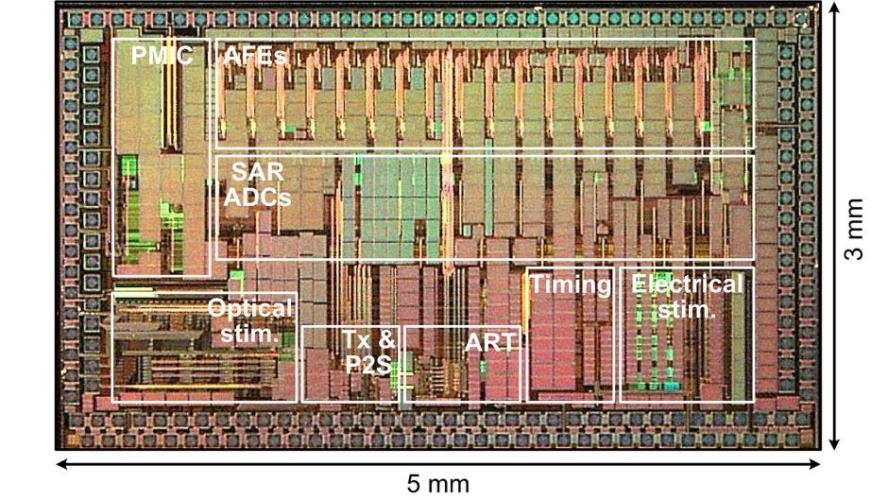
The technology was designed for use as a research tool and has been demonstrated successfully in rats.
Neural implant programmed and charged remotely
New neural interface promises a lifetime in the brain
According to Yaoyao Jia, corresponding author of a paper on the work and an assistant professor of electrical and computer engineering at North Carolina State University, the goal was to create a tool to help better understand the behaviour of different regions of the brain, particularly in response to neural stimulation.
“This tool will help us answer fundamental questions that could then pave the way for advances in addressing neurological disorders such as Alzheimer’s or Parkinson’s disease,” she said in a statement.
The new technology is fully wireless with researchers able to power the 5×3 mm2chip, which has an integrated power receiver coil, by applying an electromagnetic field. In tests on lab rats, the electromagnetic field surrounded each rat’s cage, meaning the device was fully powered regardless of what the rat was doing. The chip is also capable of sending and receiving information wirelessly.
According to NC State, current neural interface chips can do two things: read neural signals in targeted regions of the brain by detecting electrical changes in those regions; and they can stimulate the brain by introducing a small electrical current into the brain tissue.
The new wirelessly powered chip can do both of those things, but it can also perform optical stimulation by shining light onto the brain tissue. For optical stimulation to work, researchers must first genetically modify targeted neurons to make them respond to specific wavelengths of light.
“When you use electrical stimulation, you have little control over where the electrical current goes,” Jia said. “But with optical stimulation, you can be far more precise, because you have only modified those neurons that you want to target in order to make them sensitive to light. This is an active field of research in neuroscience, but the field has lacked the electronic tools it needs to move forward. That’s where this work comes in.”
The team’s paper, “A Trimodal Wireless Implantable Neural Interface System-on-Chip,” is published in IEEE Transactions on Biomedical Circuits and Systems.




Project to investigate hybrid approach to titanium manufacturing
Sadly they will not be ordering any more presses from Wilkins & Mitchell http://www.historywebsite.co.uk/articles/Darlaston/WM.htm